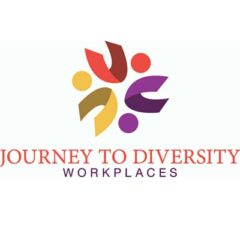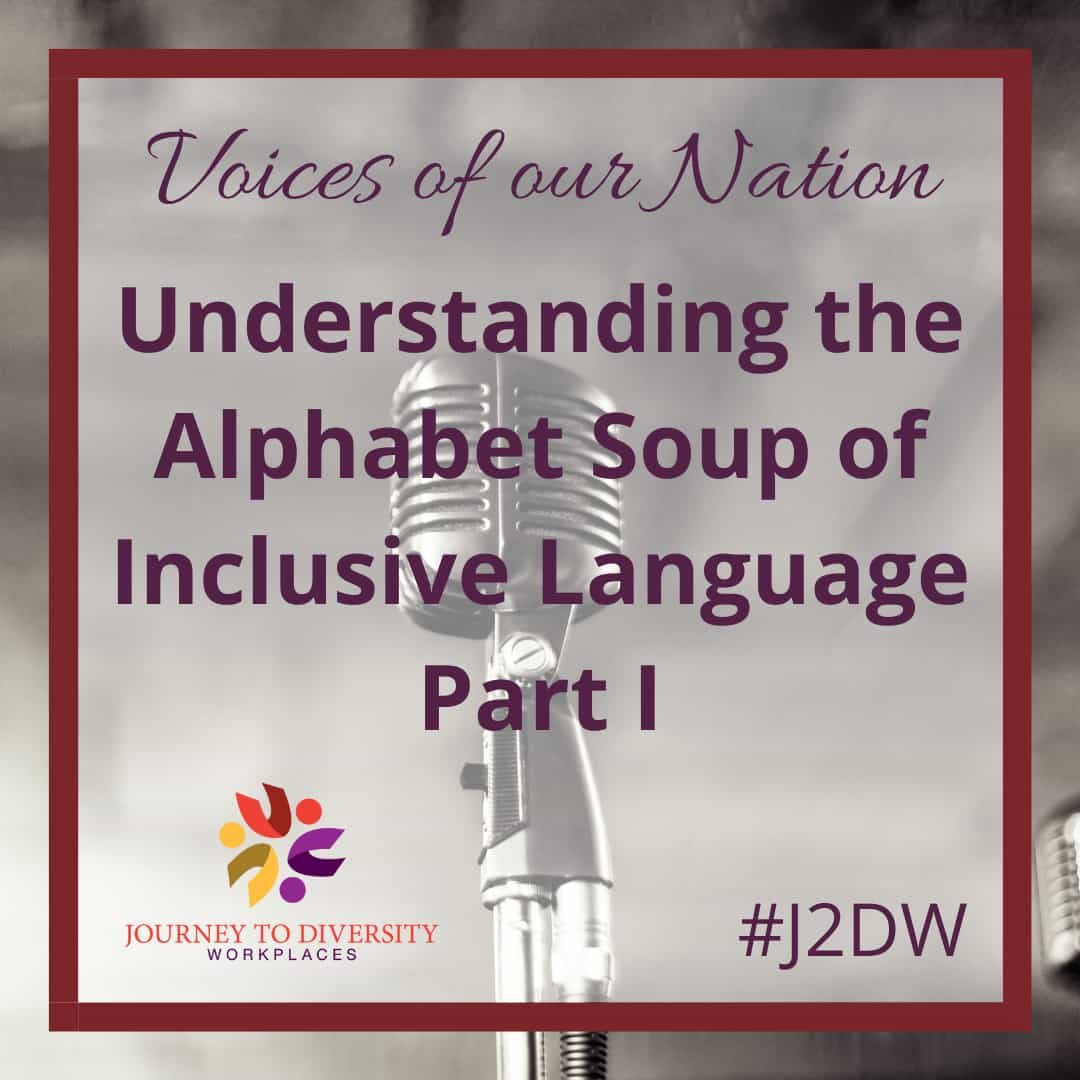Inclusive language is a term used to characterize a choice of words that seeks to include people from a diverse array of backgrounds, in order to encompass as many groups of people as possible. The terminology of inclusive language is such that it is all-embracing and respectful of everyone—particularly those belonging to marginalized groups. Its use has been steadily growing in professional spaces including workplaces, academic institutions, and in the media. At first, growing accustomed to the everyday use of inclusive language may be challenging. It can be overwhelming and even intimidating to embrace a new terminology that challenges the way one is accustomed to speaking, and it may bring unconscious biases to light. But through training, a little practice, and by keeping an open mind, incorporating inclusive language into your vocabulary will soon become second nature.
A number of organizations offer extended training and courses on the understanding and use of inclusive terminology specifically within the workplace. In this blog post, Journey to Diversity Workplaces will offer guidelines and resources for how you as an employer can start to examine the language you use in order to create a more accommodating workplace. This week, we focus on using Black- and Indigenous-inclusive language, but in a follow-up blog post we’ll discuss inclusive language as it relates to disability as well as gender and sexuality. Remember that this article is only intended as an introduction, and does not claim to serve as the be-all and end-all of what your inclusive language training should look like in terms of discussion on matters that concern race and equality.
As you go forward, bear in mind that there may be conflicting ideas over the most respectful term to refer to a group of people. As an employer, you may be inclined to turn to government resources in order to ensure that you’re using the appropriate terminology when addressing your employees, and when making reference to BIPOC, queer, and disabled communities in general. But it’s always best to listen to the preferences of the members of the minority groups that the language is describing and to treat those preferences as having authority over what official organizations might suggest. They are the ones most directly affected by the language you use.
Each topic addressed in this blog article requires a high degree of nuance, and most terminology used to refer to underrepresented groups carries a high degree of weight. Though we cannot provide an in-depth exploration of those nuances in one short blog post, we can run through some of the more common examples of inclusive language you will likely find useful in the workplace.
When referring to racial minorities as a whole, the term most commonly used in racial equality circles is BIPOC, an umbrella term that stands for “Black and Indigenous People Of Colour.” It is an expansion of the previously-used People Of Colour (POC), with the first two letters added to give more visibility to Black and Indigenous communities. Nowadays, the acronym BIPOC is preferred over POC because it emphasizes the unique types of racism that these groups experience, in particular the deep-rooted and lasting effects of slavery, colonization, and genocide (Olsen, 2022).
Capitalizing the letter B in Black is considered respectful and more inclusive when referring to Black people or to Black coworkers. In the United States, the National Association of Black Journalists (NABJ) made an official statement that they would be capitalizing the B in Black in all their communications going forward as of 2020, and recommends other organizations adopt the same practice out of respect for the Black diaspora (National Association of Black Journalists [NABJ], 2020). The capitalized Black is also preferred over the phrase African Americans because, quite simply, not all Black people are American, nor does their ancestry necessarily trace back to the African continent (Olsen, 2022).
Opinions are a little more divided over the capitalization of the letter W when referring to white people. Some Black-run organizations, including the NABJ, choose to capitalize the W in white as part of a blanket procedure for describing all racial groups. However, it’s also important to consider the race-driven context, one that white people do not share, in which Black is capitalized as a means of upholding a shared community and history, partially in response to white supremacy. There’s no easy answer here, so it may be worthwhile to invite a group discussion over the capitalization of W in white at your workplace, provided that BIPOC employees are given ample opportunity to voice their opinions in such discussions. Regardless of your company’s decision regarding the term white, however, continue to capitalize the B in Black unless your Black employees and clients express the wish to be referred to in another way.
Choosing the right terminology for Indigenous communities is sometimes challenging because there are so many different nations and communities that originate from Canada, each with its own needs and preferences. As a rule of thumb, it’s always best to refer to someone’s particular nation by name when talking to an individual or addressing a specific issue (Baker et al., 2021), but “Indigenous peoples” is generally considered an acceptable term when talking more broadly about Indigenous-related topics. Employers should turn to Indigenous-run organizations for more detailed guidelines regarding using inclusive terminology.
Indigenous Corporate Training Inc. (ICT) offers one such resource on their website, listing the circumstances under which it’s appropriate to use terms that have been used to describe Indigenous peoples. Aboriginal, for example, is a term that includes all First Nations, Inuit, and Métis Peoples, and may sometimes be used interchangeably with the term Indigenous peoples. However, some First Nations prefer not to be called Aboriginal (Indigenous Corporate Training [ICT], 2016). They also advise that while the descriptor “First Nations” covers many communities within Canada, it does not include Inuit and Métis Peoples—and many of those communities still prefer the term Indigenous, as they have publicly expressed in Ontario and elsewhere (ICT, 2016). For this reason, “Indigenous” is often preferred by many nations in Canada because of its inclusiveness.
Having said all that, it’s vital that you abide by the wishes of your Indigenous employees and clients by prioritizing the language they prefer. Language is highly personal, and there is a great diversity of thought within each individual nation (Baker et al., 2021). Though based in the United States, where some nations refer to themselves differently than those within Canada, the organization Native Governance Center explains that you should never assume all Indigenous peoples will use the same terminology. The same principle applies here in Canada.
Listening to the voices of the people you work for and work with is the most effective way in which you can create a more inclusive workplace. In practice, equality demands more than just using the right terminology. Concern for diversity needs to be reflected in your actions as an individual employer and as a company, but using inclusive language is a key starting point from which you can begin discussing how you and your company can continuously strive to do better.
Sources
Baker, T., Little Elk, W., Pollard, B., & Yellow Bird, M. (2021, October 1). How to Talk About Native Nations: A Guide. Native Governance Center. Retrieved August 13, 2022, from https://nativegov.org/news/how-to-talk-about-native-nations-a-guide/
Ferguson, J., & Bellamy, R. (2022, May 20). How to get better at using inclusive language in the workplace. Fast Company. Retrieved August 13, 2022, from https://www.fastcompany.com/90753901/how-to-get-better-at-using-inclusive-language-in-the-workplace
Indigenous Peoples terminology guidelines for usage. Indigenous Corporate Training Inc. (2016, July 20). Retrieved August 13, 2022, from https://www.ictinc.ca/blog/indigenous-peoples-terminology-guidelines-for-usage
NABJ Statement on Capitalizing Black and Other Racial Identifiers. National Association of Black Journalists. (2020, June 11). Retrieved August 13, 2022, from https://nabjonline.org/blog/nabj-statement-on-capitalizing-black-and-other-racial-identifiers/
Olsen, B. (2022). What Does the Term BIPOC Mean and Why Is It Important? LGBTQ and ALL. Retrieved August 13, 2022, from https://www.lgbtqandall.com/what-does-the-term-bipoc-mean-and-why-is-it-important/
This article was written by summer student Cossette Penner-Olivera and edited by summer student Ilesha Prabhudesai. This article was funded by the Government of Canada.



